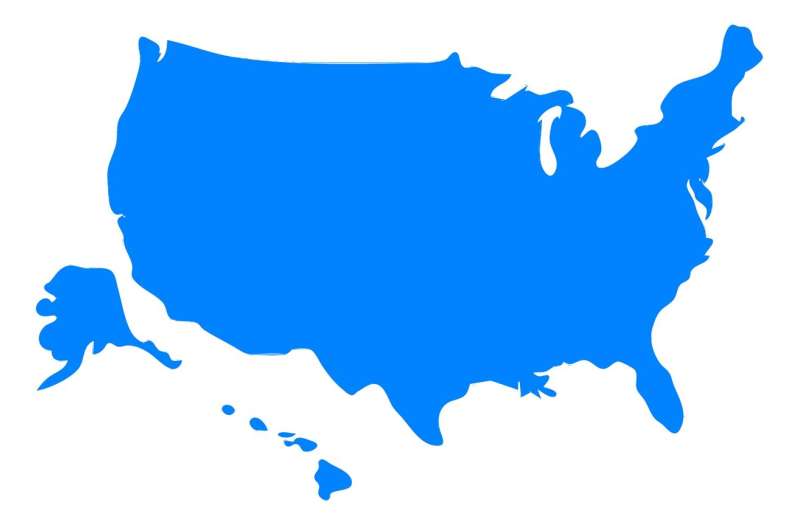Nearly a third of US population lives in an area that earmarks taxes for mental health

Local governments are increasingly adopting policies that earmark taxes for mental health services, and approximately 30% of the U.S. population lives in a jurisdiction with such a policy, finds a new analysis published in the journal The Milbank Quarterly.
These taxes generate more than $3.57 billion each year—nearly twice the amount spent by the Substance Use and Mental Health Services Administration (SAMHSA) on mental health services.
Mental health services are financed through a complex—and often insufficient—mix of federal, state, and local sources in the United States. Improving access to quality mental health services is a growing priority for policymakers and the public alike.
To increase funding for mental health services, state and local governments have been adopting taxes that “earmark” or dedicate revenue for mental health. For instance, in 2005, California’s Mental Health Services Act increased the income tax rate by 1% for households making more than $1 million and earmarked this revenue for mental health services, while Washington State enabled counties to increase their sales tax rate by 0.1% to generate mental health funding.
“A benefit of earmarked taxes is that they are often politically feasible because they guarantee that revenue will be spent on specific issues of public concern, as opposed to being spent at the discretion of elected officials,” said Jonathan Purtle, associate professor of public health policy and management at NYU School of Global Public Health, director of policy research at NYU’s Global Center for Implementation Science, and the study’s lead author. “Earmarked taxes can also secure a stable revenue stream for specific issues.”
Purtle and his colleagues conducted a nationwide assessment of the use of earmarked taxes for mental health services as of 2022. Using interviews and databases, they identified 207 relevant policies; 95.7% were local and 4.3% were at the state level. The vast majority (95.7%) passed via ballot initiative.
They found that more than 100 million people—approximately 30% of the U.S. population—live in a jurisdiction with a tax earmarked for mental health, and these taxes generate more than $3.57 billion annually.
Property taxes (73.9%) and sales taxes or fees (25.1%) were the most commonly used taxes, but policies earmarking taxes for mental health services varied widely in their design, spending requirements, and oversight. Six states with taxes on recreational marijuana mention using the revenue for mental health services. Five states passed laws to add small fees to cell phone bills to finance mental health crisis services, including 988, the new suicide and crisis lifeline.
The revenue generated by earmarked taxes for mental health is substantial in many states and localities. On average, the per capita revenue generated by the taxes was $18.59, but in 63 jurisdictions it exceeded $25 and in 12 jurisdictions it exceeded $50. For context, SAMHSA’s mental health spending in 2021, which totaled $1.8 billion, equates to $5.38 per capita among U.S. residents.
While the number of earmarked taxes for mental health has increased sharply over the past two decades, the researchers also found evidence of taxes being dedicated to mental health care as early as the 1850s, as seen in property taxes in Iowa.
“Our results illustrate an increase in state and local taxes, via ballot initiatives, to meet community mental health needs that are perceived as being unmet by the existing financing arrangements,” said Purtle.
More information:
Jonathan Purtle et al, Earmarked Taxes for Mental Health Services in the United States: A Local and State Legal Mapping Study, The Milbank Quarterly (2023). DOI: 10.1111/1468-0009.12643
Journal information:
Milbank Quarterly
Source: Read Full Article
